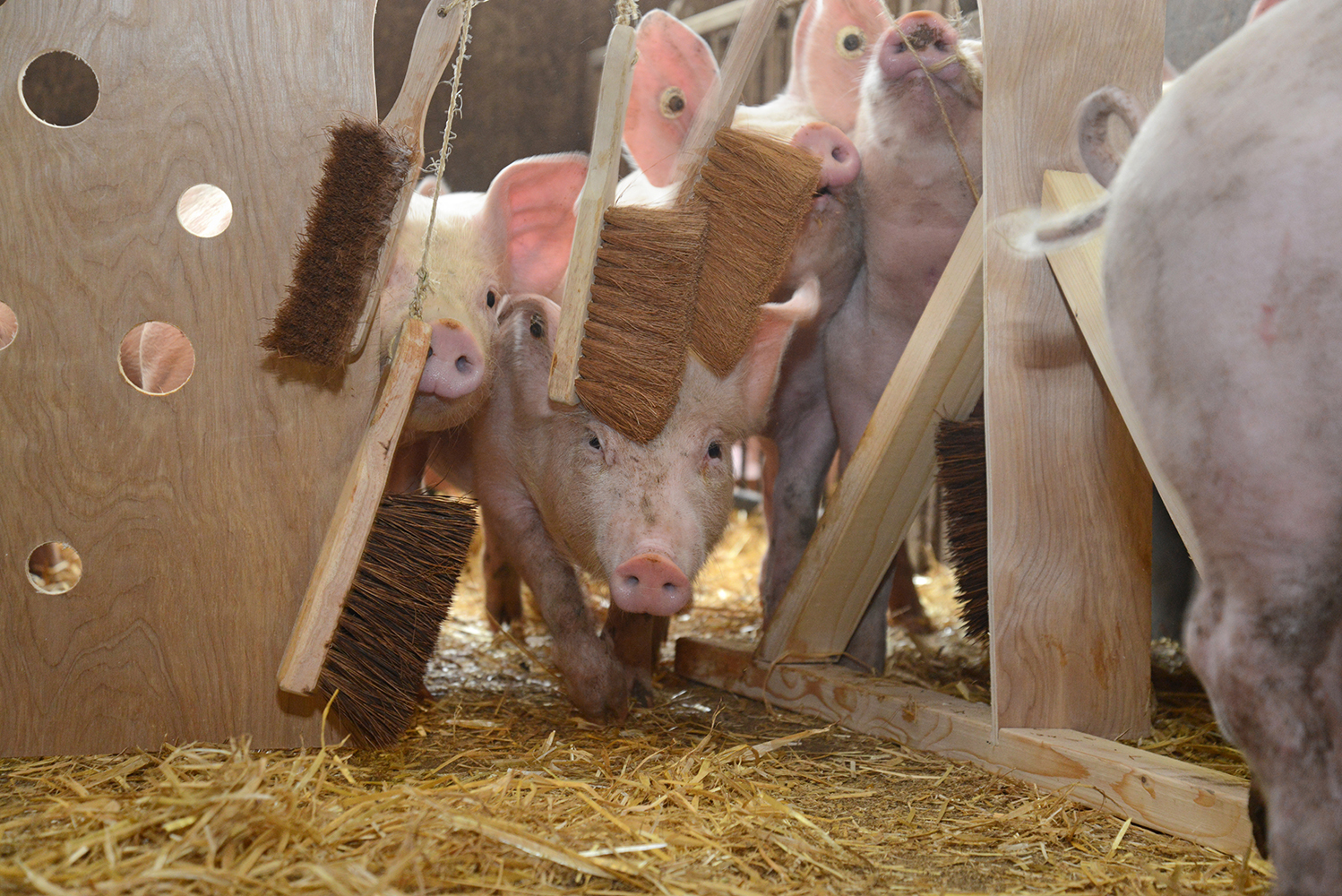Post written by Abi L. Glen
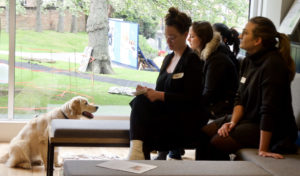
Academia is a dystopia and its hellscape is The Conference. Our dictator is Intellectual Satisfaction; his shady hoodlum, Mark ‘The REF’ Scheme. We sit, crammed into the shambling abattoir of Another University’s Lecture Theatre, trying to keep up with the barrage of facts and references and references to the facts. Promises of coffee breaks morph into Kafkaesque nightmares. It’s cold, or hot. There is unflattering lighting. The chairs were designed by masochist with a taste bypass. And Christ, somebody has to live-Tweet all of this.
Imagine, if you will, a beautiful utopia. A bank of windows; the sight of grass; some intriguing neon ribbons floating in the wind. Seating designed to cosset, not crunch. It’s Sunday, and all through the ECA, not a creature is stirring…unless you count the dogs. And oh, such hounds! Abundant and shiny and curious, snuffling about their owners, shyly making new pals. Said owners, now, stand on their own hind legs with a beatific smile to deliver their papers. The caterer is serving us vegan rainbow realness. Students hand out name badges and little wooden tags for collars, while the lecturer (a vet) bends down to greet each beast with a treat.
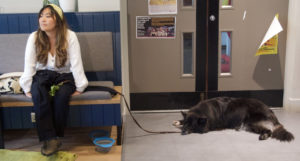
Welcome to the More Than Human workshop, the brainchild of Dr Andrew Gardiner of R(D)SVS, and his students, third-year grad vets, Sayre Sundberg and Jesse Hirota. Their question was simple but thrilling: what might animal-centric academic events look like if we considered animal needs within the event itself? The term ‘interdisciplinary’ gets tossed about like a grubby tennis ball these days. I scoff at it, to be honest; I’m a medievalist, and we don’t get a choice: you learn the dead languages and the art history and the codicology and the philosophy before you get to do anything useful. But what Andrew, Sayre and Jesse created was a truly conscious and effective form of the term: the day was not just cross-discipline or cross-institution, but inter-species.
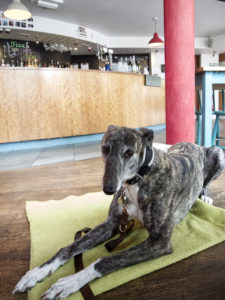
That last one is not to be sniffed at (sorry). I got some bemused reactions from colleagues about my ‘dog-friendly conference’. I am used to their good-natured snickering about my Animal Studies ways (though some are outright mischievous; my Principal Investigator mutters ‘sausages’ to wind me up every time I mention Equity For Pigs). But it was so much more than that, with huge credit going to Andrea for coming up with the goods in the afternoon session and for Cath’s install support on the day. Remember the intriguing neon ribbons I mentioned earlier? This was Talking Sticks/Moving Spaces: a temporary art installation on the lawn at Lauriston Place, designed for the Visiting Barkers (hereafter ‘VBs’) and their owners. After introductions from the Care Inspectorate’s Henry Mathias and Andrea herself, Prof.Jane Desmond walked us through the ethnography exercise for those sadly without pupper. Jane is a sociologist and dancer; her crash-course in how to observe interactions was almost balletic in content.
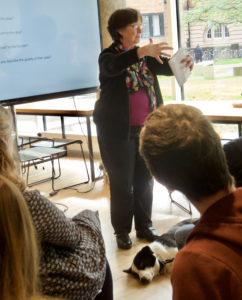
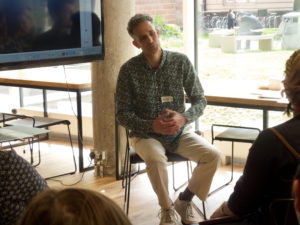
And then it was time: release the hounds! We padded out the doors with dogs in tow (or rather, the other way around) while our colleagues remained, notebooks in hand, to watch the 20 minute proceedings and draw, scrawl, and script their responses. The VBs investigated flowerpots smeared with peanut butter; a Ferrero-Rocher tower made of tennis balls; walls of neon streamers; giant rubber balls resembling blue bubbles; a scarecrow. Each had their own way of playing with the objects, with their owners, and with their fellow VBs. Here, some pictorial highlights:
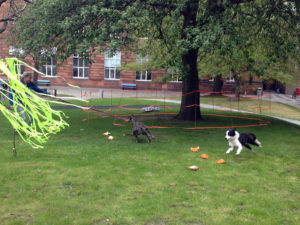

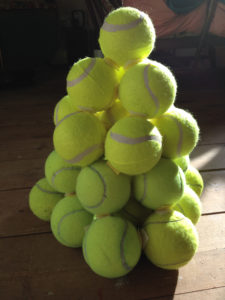

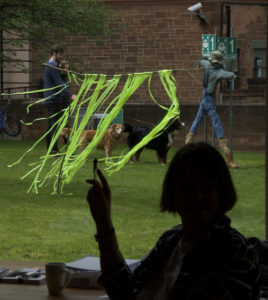
Team More Than Human also managed to perfect the standard format of papers and talks: five speakers across disciplines, career and project stages, and a mini-reading group at the end of the day. I went first: a Brief History of Swine, where everyone was gamely cheered up by an overview of EFP after I’d provided a barrage of nasty medieval antisemitisms, butchery pictures, and bacon-flavoured prophylactics. Next came Jo Williams, a developmental psychologist at Edinburgh. Jo’s work really is the end-game of inter-species work: she researches the effects of violence and Adverse Childhood Experiences on human behaviour (including cruelty to animals), but also how these might be mitigated by work with companion animals. Andrew then treated us to his signature blend of ‘tonally light but intellectually substantial’ in the form of Accommodating Benjy, Benjy being the ‘queer steer’ and viral sensation. What might it mean for farm animals to be labelled ‘queer’, and why was it deemed a reason to preclude Benjy from the slaughterhouse over the others?
Rebecca Marsland followed with a fascinating insight into the politics of bee-hives, and how beekeepers meticulously allow for these to maximise the health (and, it must be said, productivity) of their bees. We closed with Maythe Han’s extraordinary self-ethnography. Maythe gave a moving account of how her disability has altered her temporality (to ‘crip time’), but also how rescuing Frank (her handsome Border Collie mix) from Russia has helped re-orient her sense of time and purpose while navigating her disability. Not only was Maythe’s paper raw and moving, but the structure of the workshop allowed for a nice visual representation of its themes: Frank refused to let Maythe hog all the limelight, and curled up at her feet during her talk.
And so we drew to a close. Over the past few weeks, I’ve been reflecting on some outcomes and common threads from the day, beyond the (slightly) facetious suggestion that I should be allowed to bring one of the Gorgie Tamworths next time:
- The possibility that animals can be part of academic space: confirmed
- The difficulties and allowances that need to be made for them (e.g. comfort breaks, silent clapping)
- The irreverence which the animals brought allowed for ice-breaking, but also brought a paradoxical sense of calm, and this actually facilitated academic discussion
- The success of physical, interactive break-out sessions
- Guerrilla ethnographies and their usefulness
So what next? Not to put undue pressure on Sayre, Andrew and Jesse, but. The people (and the pups) demand a repeat performance: an annual gathering where we can keep pushing the boundaries of what it means to be More Than Human.

Photo credits: Andrew Gardiner and Andrea Roe
